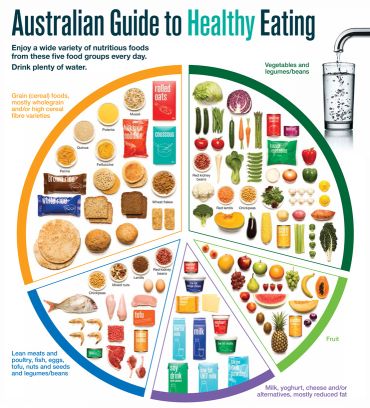Picky Eaters
Get Your Family Eating Together For Success
If you have a picky eater in your house it is more than likely you have experienced some VERY stressful mealtimes. As a result, your child may have developed a negative association with food.
So, how can you make mealtimes a more positive and enjoyable experience for the whole family? Could it be as simple as getting family eating together?

What Can You Do?
Eating together as a family can provide an important opportunity for your child to learn and adopt healthy eating behaviours. Let’s discuss why below.
Role-Modelling
Simon says eat your carrots! Well actually instead of ‘saying’ we should be ‘showing’!
Children like to mirror their parents’ and peers’ eating behaviours. This can be a good thing, especially if you are a parent who adopts healthy eating behaviours. Research says that parents’ feeding habits can influence their child’s food choices.
Eating together with your child gives you the opportunity to be a role model to show them what healthy eating looks like. Eat with them when you can and eat the foods you want them to eat. Just to check we are on the same page, note the following.
These foods should be nutritionally balanced to support growth and development. Check out the dietary guidelines for your country to help you know which foods you should be offering to your child. For example, here are the dietary guidelines for Australia (Source: Eat for Health Australian Government website).

You should welcome the idea of trying the foods that you are eating. Shared plates can be a great way to get your child to explore foods without the pressure. Your child might not want to try on the first, second or even third go. Can you relate?
Well, it might only be at the twentieth time that they finally want to have a try. The research indicates that repeated exposure and offers of unfamiliar or previously rejected foods is linked to improved uptake. So, at first you don’t succeed, try again.
Family Eating Together is an Opportunity to Praise
Eating together gives you the best opportunity to verbally praise your child. Or, what we call ‘Instrumental feeding practice’. In other words, ‘non- food-based rewards’. Research has shown that instrumental feeding is linked to greater acceptance of new foods and promoting healthier eating patterns in children.
Yes, even if you have a really picky eater, and they are just touching the food or putting the food in their mouth and spitting it out, this is something to get excited about. ‘Good chewing’ or ‘great trying’ are encouraging phrases to use for when your child is trying a new food.
Family Eating Together Encourages Conversation
One of the joys of famiy eating together is that you get to converse. Yes, school and learning might be up for discussion! But, it is also a perfect time to talk to them about food! This is when you can get a better idea of their understanding of food and help them make their own informed dietary choices.
A conversation might start by asking: what do you know about the food you are eating? You can then provide simple education tailored to their level of understanding and what they can relate to.
For example, that breakfast you are eating will help you grow or give you energy to play.

Eating with you child can also be a way for you to ask them what they like or don’t like about the food they are eating. Therefore, this is a great way to better understand your child’s sensory food preferences.
For example, ‘It is too cold’, or, ‘I like that it is crunchy’. Every child is unique and having a better understanding of their sensory preferences can make meal prepping easier.
One Step at a Time
Now we have discussed several benefits to family eating together, let’s sum up the main points. Eating together is an opportunity to:
Be a Role Model- show your child what healthy eating looks like
- Eat the foods you want them to eat
- Be guided by the dietary guidelines
- Don’t give up the first time
Verbally Praise Your Child- recognise your child’s efforts small and large
- Try helpful encouraging phrases like ‘good chewing’ or ‘great trying’
Talk About Food – ask, educate and learn about food together
- Ask them what do they know about the food they are eating?
- Provide simple education tailored to their level of understanding
- What do they like about the food they are eating?
Yes, I know what you might be thinking. It’s not always possible to eat together with busy schedules! Let’s face it – this will not change. You will always be busy. Your mantra should be ‘do what you can when you can’. If you are not currently eating with your child, perhaps you could start with one or two meals a week where you eat together. And then, build from there.
If you want further advice on your child’s picky eating habits, their nutritional adequacy and/or sensory preferences to food, I suggest booking an appointment with a paediatric dietitian. Do you know that Coordikids offers dietetic services? Click here to find out more
How Does Your Child Rate on this Checklist?
Consider seeking professional advice from a dietitian if you answer yes to any of the questions below:
- Does your child eat a limited number of food items from the core food groups? For example, refer to the Australian guide to healthy eating plate model for core food groups.
- Do you have concerns with your child’s growth and weight?
- Have you noticed that your child has a limited preference for certain food textures, colours, smells, and tastes?
- Are mealtimes and introducing new food (or reintroducing food) a real struggle?
References
DeCosta, P., Moller, P., Frost, M. B., & Olsen, A. (2017). Changing children’s eating behaviour – A review of experimental research. Appetite, 113, 327-357. doi:https://doi.org/10.1016/j.appet.2017.03.004
National Health Research Council, Healthy eating for children. Retrieved from https://www.eatforhealth.gov.au/sites/default/files/content/The%20Guidelines/n55f_children_brochure.pdf
Scaglioni, S., De Cosmi, V., Ciappolino, V., Parazzini, F., Brambilla, P., & Agostoni, C. (2018). Factors Influencing Children’s Eating Behaviours. Nutrients, 10, 706. doi:10.3390/nu10060706
Yee, A. Z. H., Lwin, M. O., & Ho, S. S. (2017). The influence of parental practices on child promotive and preventive food consumption behaviors: a systematic review and meta-analysis. The international journal of behavioral nutrition and physical activity, 14(1), 47. doi:10.1186/s12966-017-0501-3.